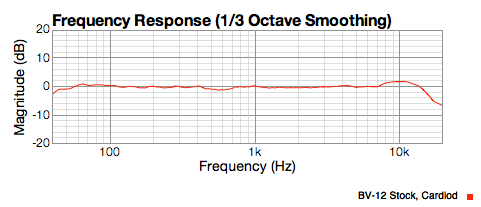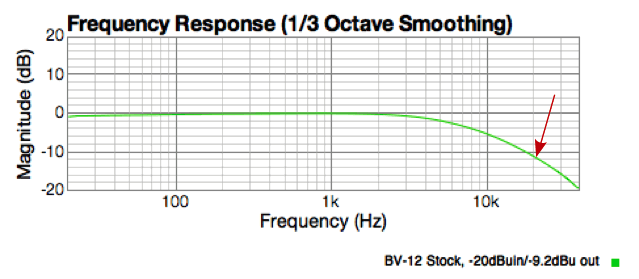The Avantone BV-12
Review by Fox Audio Research
For those who have not heard, the good folks at Avantone have released a new tube Condenser Microphone that on the surface looks like a fancy version of the older CV-12 (the Red mic). The retro Tweed case, the delux power supply, the delux shockmount and the new "Butter Cream" paint job certainly make it a nice package to look at.
The Rest of the Story
We were contacted by a desperate young audio engineer who had purchased a brand new BV-12 microphone by Avantone. He did his homework and all the information he read confirmed that he would like this microphone.
It arrived and wouldn't you know it. It didn't work. So he sent it to his supplier and not one but two techs checked it over. The problem was when it got to the techs, it worked! The old intermittant problem. A techs worst nightmare. It's very diffcult to "fix" something if it already works.
So it came back to the owner who was so happy that he would finally hear this new microphone and guess what? It didn't work again
In desperation, our young engineer called us and asked "could we help him with this problem"? The answer was "Of course".
I must confess I had heard a lot about this mic online and I wanted to see what Avantone had done to advance the art of micophone building.
When the BV-12 arrived I was very excited to open it up. When I looked inside, I saw the same circuit boards that are in the new versions of the CV-12 by Avantone. For those who follow the product from China, it looks like the SYT-1201 model. I was somewhat dissappointed but not surprised.
So What IS Different?
I plugged the mic and power supply altogether and connected it to my Apogee for a good headphone listen. What I heard surprised me. First because as before the mic now worked again. However while I was handling it I heard the sound drop out and come back. The nature of the drop outs made me think it was the polarization voltage. So at least I had a lead on where to look.
In the headphones this microphone sound had a flat response, not the bad kind of flat, but in the sense that it did not exaggerate anything in the sound spectrum, Very "Neumannesque". Very interesting!
So I started down the path of discovering what was different here.
New Capsule
Opening up the head-basket, I saw a familiar sight. The familar 23mm centre-terminated capsule had been replaced by one that looked very much like the RK12 capsules that we keep in stock here. Nice change. But the sound was not like what I normally hear from an RK12.
While looking at the capsule I noticed the something that might explain the intermittent failure. There was a small piece of electrical tape covering the back-plate connection on the capsule. The RK12 has a screw in the side of the capsule that projects out about 2mm (1/8") and someone tried to prevent it from touching the cage. I also noticed a piece of electrical tape stuck to the inside of the cage. I didn't like this. And when I removed the tape on the capsule it had a tiny wear hole in it! Not good for a mic circuit with a 1,000,000,000 ohm impedance.
The RK12 capsule has a number of holes to mount it to a saddle. The BV-12 used a wide saddle, but with this capsule and the wide saddle holes, the backplane screw pointed directly at the head-basket and there is not enough clearance in these APEX 460 style head baskets. So we replaced the saddle with the type we use and that rotated the screw up nearer the top of the capsule
Problem solved!
Why Does it Sound So Different?
We put the BV-12 up on the acoustic response test set-up and here is what it looked like in Cardiod Pattern:

Now that is not a normal RK12 response graph. It looks more like a Neumann K47 response that I have measured here in the past. The high end lift is missing a handful of dB.
One look at the circuit boards showed me that the dreaded C9 and C10 were installed on the board. For those that have not read my APEX 460 report these two capacitors connect across the output coil of the transformer and my position is that they are ten times too big for the job of protecting from Radio waves. Time to measure this circuit and see what is really going on.
The graph below is an electrical measurement of the circuit. It clearly shows that the frequency response of circuit is rolling of the high end a lot. That red arrow shows -12 dB at 20KHz. This looks very familiar. We create this kind of response in our FAR 87 and FAR 67 microphones. So we now understand why the BV-12 sounds so different.

But what is causing this roll-off? They wouldn't have done this by creating a virtual short circuit across the output transformer with c9 and c10 would they? No, that would create huge amounts of distortion. Nobody who understands tube microphones would do that...
it couldn't be... Next Page
If you have any comments for us on this review send them to :

